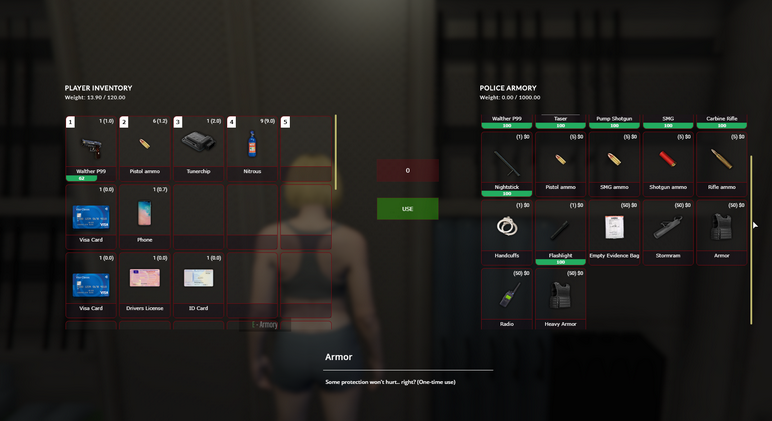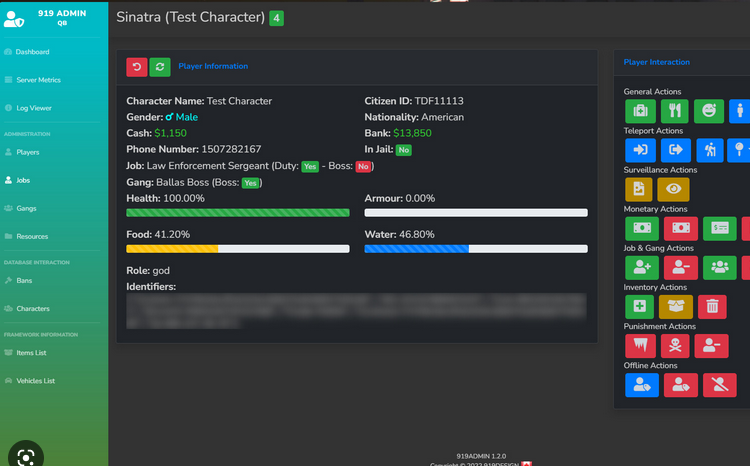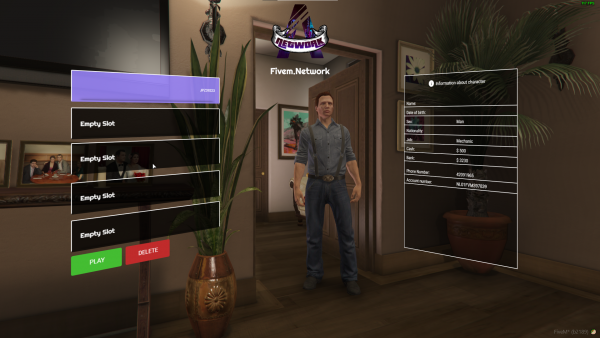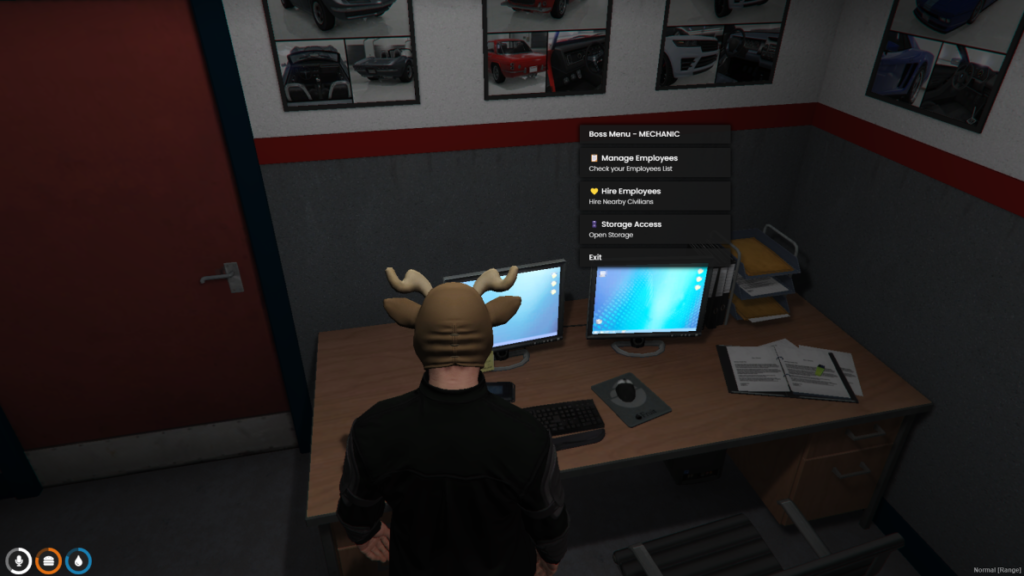A Deep Dive into QBCore’s config.lua: Optimizing Settings for Performance and Features
Estimated reading time: 6 minutes
- Enhance server performance by mastering the config.lua file.
- Tweak essential settings for languages, permissions, and features.
- Implement best practices for optimization and monitoring.
- Utilize asynchronous processes for heavy tasks.
Table of Contents
- Understanding QBCore’s config.lua
- Basic Configuration and Organization
- Enabling/Disabling Features
- Permissions and Player Management
- Performance Optimization in config.lua
- Advanced Features and Best Practices
- Conclusion
- FAQ
Understanding QBCore’s config.lua
The config.lua file is crucial for managing essential settings within a QBCore server, allowing developers to toggle features, define permissions, and integrate various scripts seamlessly. Mastering this file is not just about improving performance; it’s about elevating the overall player experience by creating a responsive and engaging environment.
1. Basic Configuration and Organization
One of the first steps to mastering your config.lua is ensuring that your basic configuration is set up correctly.
- Framework Detection: Using framework detection helps maintain compatibility when switching between frameworks like ESX and QBCore. This can be done with the following code:
Config.Core = frameworkAutoFind() -- Automatically detect framework: ESX or QBCore.
This feature streamlines the setup process, ensuring a hassle-free transition between frameworks. For detailed exploration, check out the documentation.
- Language Settings: To enhance user experience for players who speak different languages, customize the server’s language configurations using the Locale setting. You can translate essential strings in a separate language file, updating config.lua accordingly. More about language configurations can be found in the RCore guide.
2. Enabling/Disabling Features
Adjusting features is pivotal for tailoring your server environment. The following snippet helps to toggle key features:
Config.EnableBlips = true -- Enable/disable map markers.
Config.Payout = 500 -- Customize job payouts as desired.
Config.EnableStressEffects = false -- Turn stress effects on or off.
By customizing these toggles, you can shape the gameplay experience to align with your vision, ensuring players remain engaged while maximizing server performance. More details can be found here.
3. Permissions and Player Management
Effective permission management is crucial for maintaining a smooth server operation. You can set permissions in the config.lua file, as shown below:
QBConfig.Permissions = {'god', 'admin', 'mod'} -- Add permission levels.
This level of control allows you to manage user roles efficiently and enhances security within your server environment. Learn more about user permissions from GitHub’s QBCore repository.
Performance Optimization in config.lua
For an efficient gaming experience, performance is key. Below are specific practices to improve your QBCore server’s performance via the config.lua and related configurations:
1. Script Optimization
Regularly auditing and updating your QBCore scripts is essential to ensure they are performing optimally. Check out this guide for more details. It’s advised to minimize tasks that run every tick by utilizing asynchronous operations, especially for heavy processes such as database queries to avoid blocking the main thread.
2. Reducing Unnecessary Server Load
Lowering the server load is vital for performance. This can be achieved by disabling unused features in config.lua:
Config.UseMarkers = false -- Turn off unnecessary markers.
Config.UseText3D = false -- Disable 3D text overlays for performance.
Also, consider using optimized database systems like MariaDB and indexing your database queries for quicker data retrieval. You can find detailed performance enhancement strategies in the FiveM optimization guide.
3. Implement Asynchronous Processes
For resource-heavy tasks, especially those concerning player data updates, it is recommended to run these processes asynchronously:
Config.GetVehicleDamage = function(vehicle)
return GetVehicleEngineHealth(vehicle) -- Asynchronous data retrieval.
end
By doing so, you ensure better performance and responsiveness of the server, allowing players to enjoy a smoother gaming experience.
4. Continuous Monitoring
Utilize performance-monitoring tools like the integrated profiler (resmon) offered by FiveM. This tool helps identify scripts consuming excessive resources, allowing for targeted optimizations. Regularly clearing server cache can also mitigate performance issues such as lag and slow loading times—learn more about cache clearing in the QBCore documentation.
5. Debugging and Testing
Enable the debug features in your config.lua file to help unpack any script issues during development, but use these tools judiciously in production environments to avoid unnecessary resource usage:
Config.Debug = true
For a comprehensive understanding of debugging practices, refer to RCore’s guide.
6. Network Optimization
To reduce latency, optimize your server bandwidth settings within server.cfg by enabling OneSync:
set onesync on
This feature is particularly beneficial for larger servers to improve synchronization among players and server-side events. For more on network optimization, visit the QBCore documentation.
Advanced Features and Best Practices
In addition to the fundamental strategies laid out above, here are some advanced practices to further enhance your QBCore server’s performance:
1. Advanced Event Handling
Using server-side event handling instead of client-side whenever possible helps alleviate processing burdens from player machines, reducing individual client lag and enhancing server stability. Further information regarding event handling strategies can be found at FiveM tutorials.
2. Configurable Dynamic Features
Dynamic features are vital for offering an engaging gameplay experience. Use the settings in config.lua to flexibly adjust features:
Config.SeatBeltMinimumSpeedToRagdoll = 100 -- Define speed thresholds for player effects.
Config.PlateFormat = 'ABC 1234' -- Customize license plate generation formats.
These features allow you to create a unique gameplay atmosphere, fostering deeper player engagement by integrating personalized gameplay experiences.
3. Backup and Version Control
Before making any significant alterations to your config.lua, it’s crucial to back it up. Utilizing version control tools such as Git will facilitate tracking adjustments and provide rollback options if any issues arise from modifications. More on version control practices can be discovered at FiveM tutorials.
Conclusion
Mastering QBCore’s config.lua file is critical for establishing a finely-tuned FiveM server. By merging performance optimizations with thoughtful feature management, server administrators can cultivate an engaging and smooth player experience. The importance of consistent updates, monitoring, and adherence to best practices cannot be overstated in maintaining optimal server performance and stability over time.
If you’re eager to enhance your understanding and implementation of workflow automation and AI consulting in your recruitment processes, explore our services at qbcore.net. Whether you’re looking for custom solutions or need assistance in optimizing your server settings, our team is here to help! Contact us today for more information and take your first step towards a more efficient and effective workflow.
FAQ
- What is config.lua in QBCore? It is a core configuration file that allows developers to manage server settings.
- How can I optimize my QBCore server? By auditing scripts, reducing server load, implementing asynchronous processes, and monitoring performance.
- Is it safe to modify config.lua? Yes, but always make sure to back it up before any major changes.
- Where can I find more resources on QBCore? Check out the QBCore documentation for comprehensive guides.





